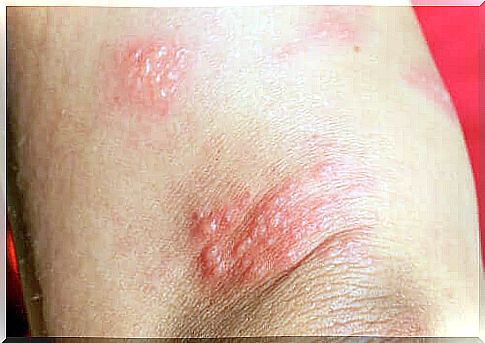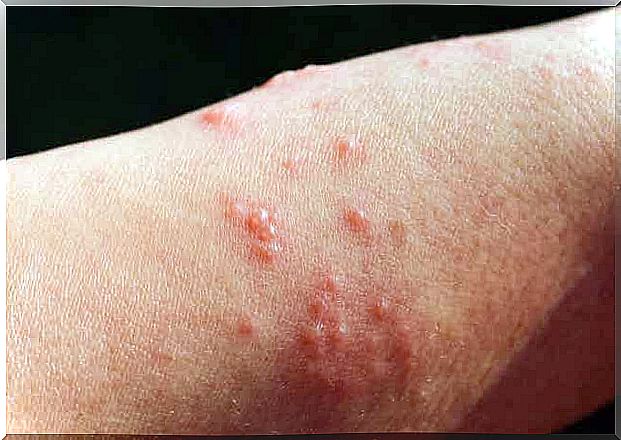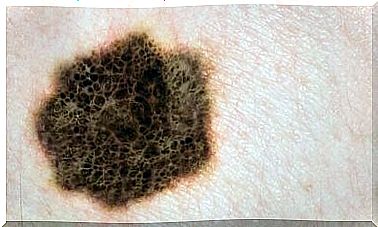Pemphigoid Gestationis During Pregnancy

Pregnancy is often one of the happiest times for a woman. However, a pregnancy can mean a vulnerability to pregnancy-related conditions that affect her quality of life. Pemphigoid gestationis is a rare autoimmune bladder-forming dermatosis that can occur during pregnancy. It manifests as itchy blisters.
Why does pemphigoid gestationis occur during pregnancy?
Pemphigoid gestationis is most often triggered during the third trimester. However, it can occur at any time during pregnancy, or after birth. What creates the skin blisters is an autoimmune process that involves autoantibodies. This means that the immune system incorrectly starts an attack on its own skin.
However, it resolves spontaneously within two months after birth, except in rare cases where it may be longer. According to studies in the Orphanet Journal of Rare Diseases , pemphigoid gestationis occurs in an estimated one in 40,000-50,000 pregnancies, with no difference in racial distribution.

Clinical manifestations
The emergence of pemphigoid gestationis is polymorphic in nature. Itching is the predominant symptom of the condition. Sometimes the itching can even precede the appearance of the blisters.
The itching begins in the area around the navel, where a variety of red blisters appear over time. These occur either in the form of hives or rashes of the form erythema multiforme. Then, after about 3 weeks, these develop into large, red, fluid-filled blisters that form under the epidermis.
The blisters that were originally located gradually begin to spread to the abdomen, extremities and the rest of the body. However, they rarely appear on mucous membranes or the face.
In 75% of cases, the disease is reactivated at each birth. The wounds from pemphigoid gestationis usually disappear within 15 weeks after birth, without leaving any spots or scars.
Possible differential diagnosis
When diagnosing this condition, it is important to, in consultation with a dermatologist, rule out the presence of PUPPP (Pruritic Urticarial Papules and Plaques of Pregnancy). This is another type of rare pregnancy rash.
PUPPP is an allergy-like itch that in rare cases can affect pregnant women. The clinical manifestations are very similar to pemphigoid gestationis. Their similarities are as follows:
- Both appear with a beginning in the area around the navel.
- Both occur more often during the third trimester.
- The rash disappears spontaneously a few weeks after birth.
There are very few characteristics that distinguish them. But PUPPP usually does not develop large fluid-filled blisters, and as it expands, it also spreads to the legs and armpits.
How to confirm the diagnosis of pemphigoid gestationis
A dermatologist makes the diagnosis by examining the patient’s symptoms. Depending on the symptoms that the patient shows at the visit, the doctor decides if a biopsy of the lesions is needed.
This procedure means that the patient receives local anesthesia and that the doctor removes part of the lesion for laboratory analysis. The doctor can also take a blood sample for subsequent analysis of the antigen levels in the blood.
How to treat and manage pemphigoid gestationis
The treatment of pemphigoid gestationis depends on the stage of the skin lesion, as well as the severity of the clinical picture. Two of the conditions for treatment according to dermatological clinics are the following:
- Relieve the itching of the pregnant woman.
- Avoid adding new blisters.
Corticosteroids
In mild cases, doctors prescribe topical corticosteroid creams to reduce itching and inflammation in the affected area. During pregnancy, it is preferable to use mild or moderate topical corticosteroids over strong or very strong ones.
Antihistamines
One can combine topical corticosteroid treatments and oral antihistamine treatments to increase the effect and reduce the itching. Second-generation antihistamines (cetirizine and loratadine) are best for use during pregnancy.

Always consult your obstetrician before taking any medicine if you are pregnant. In fact, this also applies to over-the-counter medicines.
Hygiene and care measures
In mild cases, doctors will recommend that you take certain measures at home to reduce itching:
- Keep skin cool and moisturized.
- Try to stay in a cool or air-conditioned environment.
- Wear 100% cotton clothes and avoid synthetic fabrics.
Pemphigoid gestationis during pregnancy and quality of life
In short, the symptoms that this itchy skin disease causes can create a certain weakness in the pregnant woman. However, pemphigoid gestationis does not pose a direct risk to the mother’s health, nor to the baby. An interdisciplinary treatment by a gynecologist, obstetrician and dermatologist is necessary to ensure a coordinated and appropriate follow-up.









